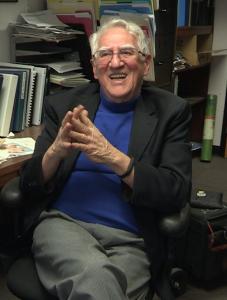Dr. Russ Schnell

Dr. Russell Schnell is a distinguished scientist with a remarkable career dedicated to environmental research and monitoring. His journey began as a teenager when he joined the Royal Canadian Air Cadet squadron. At the age of 18, he embarked on his first international trip as part of the inaugural Air Cadet exchange program with Israel. During his first year of graduate studies in 1968, Dr. Schnell made a groundbreaking discovery of biological ice nuclei, which has now become a distinct and actively researched field. Over the past 24 months alone, approximately 200 papers on this subject have been published, highlighting the significance of his contribution. In 1974, Dr. Schnell directed the WMO Mount Kenya Baseline Observatory Study, leading to the subsequent establishment of the observatory based on his recommendations. From 1982 to 1992, he served as the director of the Arctic Gas and Aerosols Program. This influential program demonstrated that Arctic Haze originated from pollution in Eastern Europe and produced 256 reviewed publications. In 2007, Dr. Schnell made another significant discovery, linking wintertime ozone production to natural gas production. His research has focused on various aspects of ice nuclei, ozone, and climate-related projects throughout his career. From 1992 to 2000, Dr. Schnell served as the Director of the Mauna Loa Observatory, where he played a pivotal role in expanding the research facilities by tripling the number of research buildings during his tenure. Currently, he holds the position of Deputy Director of the Global Monitoring Division in the Earth Systems Research Laboratory. Dr. Schnell's remarkable contributions and expertise have been honed over his 44-year collaboration with NOAA (National Oceanic and Atmospheric Administration), cementing his status as a highly respected and accomplished scientist in the field of environmental research and monitoring.
Scope and Content Note
Topics discussed include: atmospheric monitoring, carbon dioxide changes, Mauna Loa Observatory, greenhouse effect, renewable energy, and policy implementation.
In the recording Dr. Russ Schnell explains the importance of atmospheric monitoring and the role of the Global Monitoring Laboratory (GML) in collecting data on greenhouse gasses. He emphasizes the need to measure and understand the changes occurring in the atmosphere, particularly regarding carbon dioxide (CO2) levels. He also highlights the significance of the Mauna Loa Observatory in Hawaii, which has been continuously monitoring CO2 levels since the 1950s. He underscores the alarming increase in CO2 concentrations and stresses the need for global cooperation to address climate change.
Dr.Schnell goes on to describe the impact of carbon dioxide on the climate and the potential consequences of rising levels. He explains the greenhouse effect, emphasizing how CO2 traps heat and contributes to global warming and also touches on the importance of reducing emissions to mitigate climate change's adverse effects, such as sea level rise, extreme weather events, and ecosystem disruptions. He mentions the need for renewable energy sources and carbon capture technologies to curb CO2 emissions effectively. Dr. Schnell then addresses the influence of human activities on carbon dioxide levels and the urgency of taking action. He highlights the role of fossil fuel burning, deforestation, and land-use changes in driving CO2 emissions, stressing the need for transitioning to a sustainable economy, adopting renewable energy, and implementing policies to limit greenhouse gas emissions. He also touches on the potential for technological advancements and international collaboration to mitigate climate change and protect the planet for future generations.
Please Note: The oral histories in this collection are protected by copyright and have been created for educational, research and personal use as described by the Fair Use Doctrine in the U.S. Copyright law. Please reach out Voices@noaa.gov to let us know how these interviews are being used in your research, project, exhibit, etc. The Voices staff can help provide other useful resources related to your inquiry.
The NOAA mission is to understand and predict changes in climate, weather, oceans, and coasts, to share that knowledge and information with others, and to conserve and manage coastal and marine ecosystems and resources. The Voices Oral History Archives offers public access to a wide range of accounts, including historical materials that are products of their particular times, and may contain offensive language or negative stereotypes.
Voices Oral History Archives does not verify the accuracy of materials submitted to us. The opinions expressed in the interviews are those of the interviewee only. The interviews here have been made available to the public only after the interviewer has confirmed that they have obtained consent.
